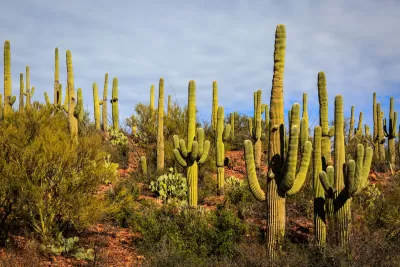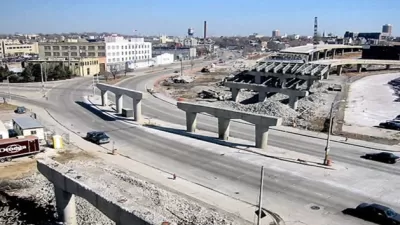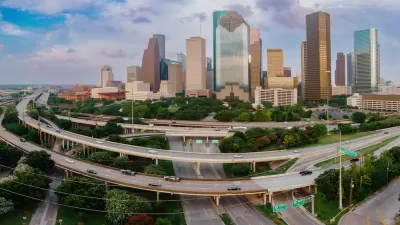Conservation groups in Arizona are suing to stop a freeway project that would destroy essential habitat for the cactus ferruginous pygmy owl.

A tiny, threatened owl species in the Southwestern desert could spell doom for a major interstate freeway project. As Kea Wilson explains in Streetsblog USA, a lawsuit brought by environmental groups charges that the Federal Highway Administration’s (FHWA) proposal to build Interstate 11 through Arizona could decimate the owl population and destroy fragile desert habitat.
“Lead by the Center for Biological Diversity, the suit builds upon a 2022 legal challenge which alleged that the FHWA had missed critical environmental review steps required under the Environmental Protection Act when it first proposed the western and eastern options for the highway — and now, they say it's also in violation of the Endangered Species Act, since the pygmy owl was federally designated as "threatened" in July of 2023.”
Despite the owl’s diminutive size, Wilson notes that its status as apex predator means any impacts on the owl species could reverberate across the local food chain.
The threat to the pygmy owl isn’t the only objection people have to the freeway project. The region’s water supply is already severely strained. “If I-11 is built, though, it will almost certainly usher in a spate of new development which the Center for Biological Diversity estimates will multiply the population tenfold — and multiply water use to a staggering 1,180 percent.” The environmental analysis did not take potential new water needs into account. Meanwhile, community advocates say building the road through Tucson would deepen existing inequalities and further divide communities.
Russ McSpadden, Southwest conservation advocate at the Center for Biological Diversity, urges Arizona to “confront its transportation challenges without building a brand new mega-highway — by expanding transit services, bike lanes, and pedestrian infrastructure within mega-metros that already exist, rather than exhausting those funds for water-draining, suburb-spawning highways.”
FULL STORY: Can This Tiny Owl Defeat One of America’s Biggest Highway Projects?

Study: Maui’s Plan to Convert Vacation Rentals to Long-Term Housing Could Cause Nearly $1 Billion Economic Loss
The plan would reduce visitor accommodation by 25,% resulting in 1,900 jobs lost.

North Texas Transit Leaders Tout Benefits of TOD for Growing Region
At a summit focused on transit-oriented development, policymakers discussed how North Texas’ expanded light rail system can serve as a tool for economic growth.

Why Should We Subsidize Public Transportation?
Many public transit agencies face financial stress due to rising costs, declining fare revenue, and declining subsidies. Transit advocates must provide a strong business case for increasing public transit funding.

How Community Science Connects People, Parks, and Biodiversity
Community science engages people of all backgrounds in documenting local biodiversity, strengthening connections to nature, and contributing to global efforts like the City Nature Challenge to build a more inclusive and resilient future.

Alabama: Trump Terminates Settlements for Black Communities Harmed By Raw Sewage
Trump deemed the landmark civil rights agreement “illegal DEI and environmental justice policy.”

Dear Tesla Driver: “It’s not You, It’s Him.”
Amidst a booming bumper sticker industry, one writer offers solace to those asking, “Does this car make me look fascist?”
Urban Design for Planners 1: Software Tools
This six-course series explores essential urban design concepts using open source software and equips planners with the tools they need to participate fully in the urban design process.
Planning for Universal Design
Learn the tools for implementing Universal Design in planning regulations.
City of Santa Clarita
Ascent Environmental
Institute for Housing and Urban Development Studies (IHS)
City of Grandview
Harvard GSD Executive Education
Toledo-Lucas County Plan Commissions
Salt Lake City
NYU Wagner Graduate School of Public Service





























